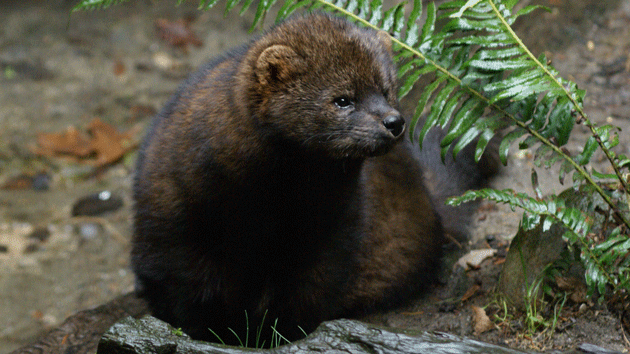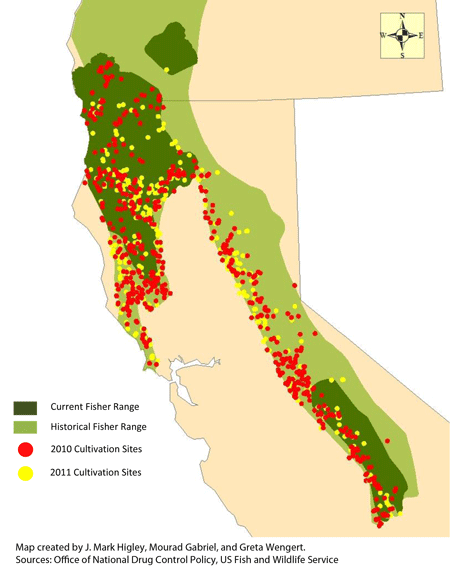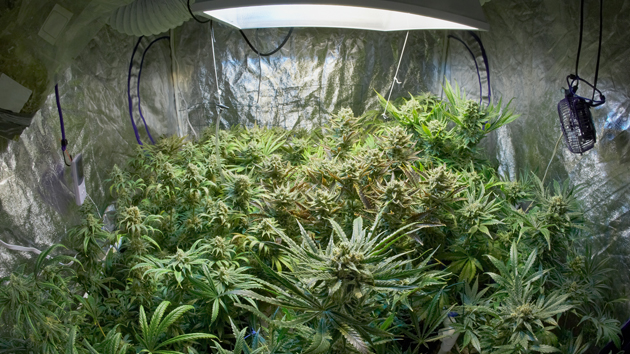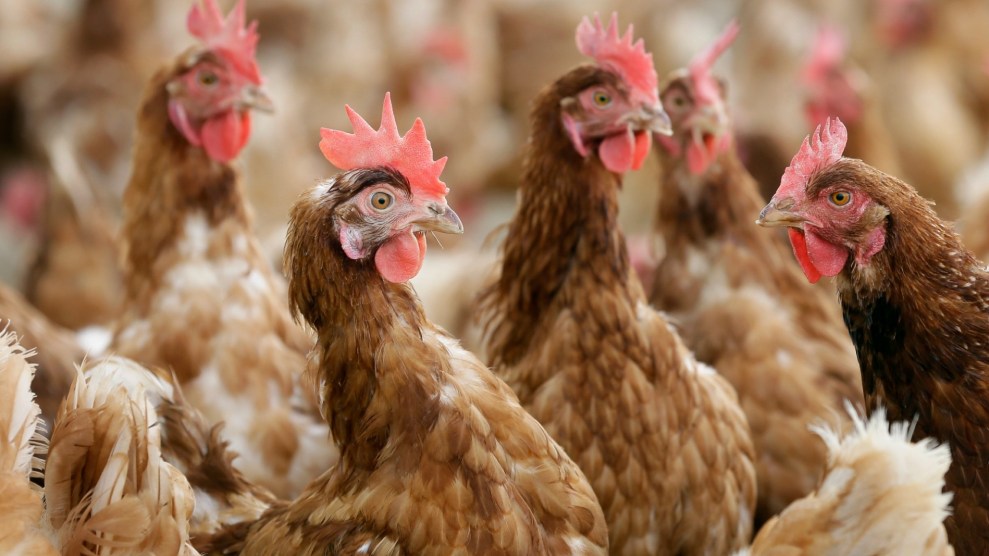
A fisherUS Fish and Wildlife Service
Weed smokers, here’s some news to bring you down from your high: On Monday, the US Fish and Wildlife Service (FWS) proposed listing the western population of fishers, furry relatives of weasels, as “threatened” under the Endangered Species Act. According to a press release, the “major threats” to the species include “toxicants associated with anti-coagulant rodenticides” used at “illegal marijuana cultivation sites…on public, private, and tribal lands.”
Fishers are forest-dwelling, cat-sized mammals—and one of the only known predators of porcupines—that were nearly wiped out by trapping and logging during the 19th and 20th centuries. Some of the current threats to the fishers are familiar, like wildfires and logging. But FWS found the misuse of rodenticides, more commonly known as rat poison, to be a “relatively recent and troubling threat.” There are now about 4,000 fishers left in dispersed pockets in California, Oregon, and Washington. FWS cited a study that found rat poison in the blood of 85 percent of fishers studied between 2012 and 2014.

The rise in rodenticide usage stems partly from the proliferation of “trespass grows,” or hidden spots in public parks, forests, and tribal lands where marijuana growers cultivate their goods. Each year, the United States grows about 22 million pounds of marijuana, and nearly half of the cannabis eradicated by law enforcement comes from trespass grows. It’s difficult to overstate how much the grows contribute to the weed industry: In 2013, 72 percent of the outdoor plants seized by law enforcement in California came from trespass grows.
The decline of fishers is only one of a number of side-effects to this booming, secretive cultivation. Illegal grows divert streams, use tremendous amounts of water and energy, apply unregulated or banned rodenticides, and, in some cases, pose safety risks to researchers like Mourad Gabriel, who led the rat-poison study cited by FWS.
This video, produced by my colleagues Brett Brownell and Josh Harkinson for their deep-dive on the topic earlier this year, gives a sense of the shady world of trespass grows:
Monday’s proposal to add the western population of fishers to the threatened species list would make it illegal to harm, kill, wound, or trap fishers in Oregon, Washington, and California. The Fish and Wildlife Service is seeking comment on the proposal for 90 days, during which several public informational meetings will be held in the three states.














